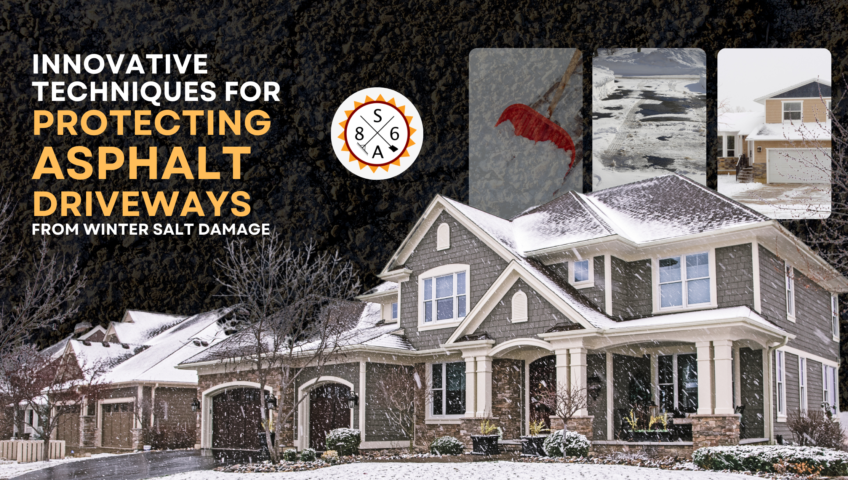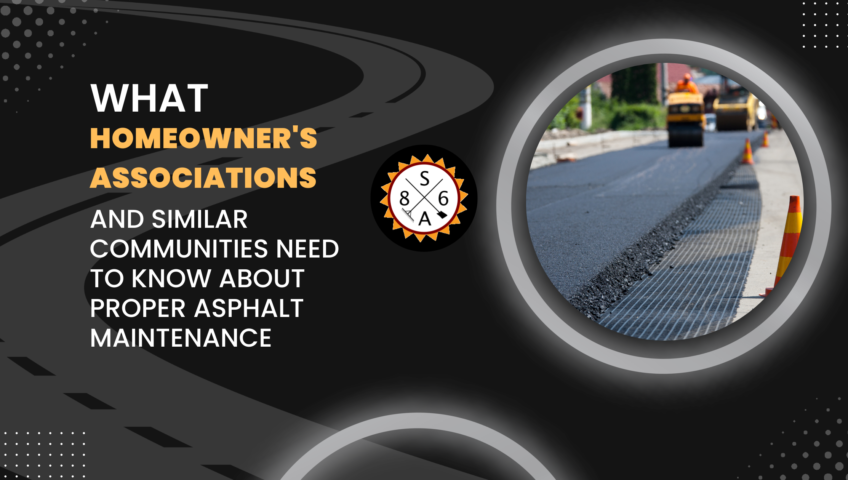
Unveiling the Secrets: 7 Lesser-Known Facts About Commercial Asphalt Paving
Commercial asphalt paving, often overlooked, is a vital component of modern infrastructure. While it might seem mundane, asphalt holds intriguing secrets that most may not know about. Let’s dive into seven fascinating aspects of commercial asphalt paving that might surprise you.
The Ancient Roots of Asphalt:
While asphalt might seem like a product of modern engineering, its roots trace back thousands of years. Ancient civilizations, such as the Mesopotamians and Egyptians, utilized naturally occurring asphalt for waterproofing and construction purposes. The famous ancient city of Babylon used asphalt for its roads and structures, highlighting its enduring legacy.
Asphalt’s Green Credentials:
Contrary to popular belief, asphalt is a remarkably eco-friendly paving material. With advances in technology, modern asphalt mixes incorporate recycled materials like old tires, glass, and asphalt millings. Additionally, asphalt is 100% recyclable, making it a sustainable choice for commercial paving projects. By opting for asphalt, businesses contribute to the circular economy and reduce their carbon footprint.
The Science Behind Asphalt’s Durability:
Ever wondered why asphalt withstands the test of time? It’s all about the science. Asphalt’s durability stems from its unique composition of aggregates, binder, and air voids. This concoction allows asphalt to flex under heavy loads, preventing cracks and potholes. Moreover, ongoing research and development have led to the creation of high-performance asphalt mixes that excel in durability, further extending the lifespan of paved surfaces.
Asphalt’s Silent Role in Urban Heat Islands:
Urban heat islands, characterized by higher temperatures in densely populated areas, are a growing concern. Surprisingly, asphalt plays a role in mitigating this issue. Light-colored asphalt pavements, known as cool pavements, reflect sunlight instead of absorbing it, reducing heat absorption and subsequently lowering urban temperatures. By incorporating cool pavements into commercial paving projects, businesses can contribute to creating cooler, more comfortable urban environments.
Asphalt’s Contribution to Road Safety:
Beyond providing a smooth driving surface, asphalt plays a crucial role in road safety. Its dark color enhances contrast with road markings, improving visibility, especially during adverse weather conditions or at night. Additionally, asphalt’s skid resistance properties help vehicles maintain traction, reducing the risk of accidents. Through meticulous engineering and maintenance, commercial asphalt paving ensures safer journeys for motorists and pedestrians alike.
The Art of Asphalt Maintenance:
Proper maintenance is key to maximizing the lifespan of asphalt pavements. From routine inspections to timely repairs, commercial asphalt paving involves a meticulous process aimed at preserving the integrity of paved surfaces. Techniques such as crack sealing, pothole patching, and asphalt overlay help rejuvenate aging pavements, ensuring they remain functional and aesthetically pleasing for years to come.
Asphalt’s Role in Economic Development:
Commercial asphalt paving isn’t just about constructing roads; it’s about fostering economic growth. Well-maintained roads and parking lots are essential for businesses, facilitating the smooth flow of goods and customers. Moreover, investing in quality asphalt infrastructure enhances property values and attracts investments to commercial areas. By prioritizing asphalt paving projects, businesses contribute to the economic prosperity of their communities.
In conclusion, commercial asphalt paving is a multifaceted field filled with surprises. From its ancient origins to its modern-day contributions to sustainability and safety, asphalt continues to play a pivotal role in shaping our urban landscape. By understanding and appreciating these lesser-known facts, businesses can make informed decisions when it comes to their paving needs, ensuring long-lasting and impactful infrastructure investments.
Commercial asphalt paving, often overlooked, is a vital component of modern infrastructure. While it might seem mundane, asphalt holds intriguing secrets that most may not know about. Let’s dive into seven fascinating aspects of commercial asphalt paving that might surprise you.
The Ancient Roots of Asphalt:
While asphalt might seem like a product of modern engineering, its roots trace back thousands of years. Ancient civilizations, such as the Mesopotamians and Egyptians, utilized naturally occurring asphalt for waterproofing and construction purposes. The famous ancient city of Babylon used asphalt for its roads and structures, highlighting its enduring legacy.
Asphalt’s Green Credentials:
Contrary to popular belief, asphalt is a remarkably eco-friendly paving material. With advances in technology, modern asphalt mixes incorporate recycled materials like old tires, glass, and asphalt millings. Additionally, asphalt is 100% recyclable, making it a sustainable choice for commercial paving projects. By opting for asphalt, businesses contribute to the circular economy and reduce their carbon footprint.
The Science Behind Asphalt’s Durability:
Ever wondered why asphalt withstands the test of time? It’s all about the science. Asphalt’s durability stems from its unique composition of aggregates, binder, and air voids. This concoction allows asphalt to flex under heavy loads, preventing cracks and potholes. Moreover, ongoing research and development have led to the creation of high-performance asphalt mixes that excel in durability, further extending the lifespan of paved surfaces.
Asphalt’s Silent Role in Urban Heat Islands:
Urban heat islands, characterized by higher temperatures in densely populated areas, are a growing concern. Surprisingly, asphalt plays a role in mitigating this issue. Light-colored asphalt pavements, known as cool pavements, reflect sunlight instead of absorbing it, reducing heat absorption and subsequently lowering urban temperatures. By incorporating cool pavements into commercial paving projects, businesses can contribute to creating cooler, more comfortable urban environments.
Asphalt’s Contribution to Road Safety:
Beyond providing a smooth driving surface, asphalt plays a crucial role in road safety. Its dark color enhances contrast with road markings, improving visibility, especially during adverse weather conditions or at night. Additionally, asphalt’s skid resistance properties help vehicles maintain traction, reducing the risk of accidents. Through meticulous engineering and maintenance, commercial asphalt paving ensures safer journeys for motorists and pedestrians alike.
The Art of Asphalt Maintenance:
Proper maintenance is key to maximizing the lifespan of asphalt pavements. From routine inspections to timely repairs, commercial asphalt paving involves a meticulous process aimed at preserving the integrity of paved surfaces. Techniques such as crack sealing, pothole patching, and asphalt overlay help rejuvenate aging pavements, ensuring they remain functional and aesthetically pleasing for years to come.
Asphalt’s Role in Economic Development:
Commercial asphalt paving isn’t just about constructing roads; it’s about fostering economic growth. Well-maintained roads and parking lots are essential for businesses, facilitating the smooth flow of goods and customers. Moreover, investing in quality asphalt infrastructure enhances property values and attracts investments to commercial areas. By prioritizing asphalt paving projects, businesses contribute to the economic prosperity of their communities.
In conclusion, commercial asphalt paving is a multifaceted field filled with surprises. From its ancient origins to its modern-day contributions to sustainability and safety, asphalt continues to play a pivotal role in shaping our urban landscape. By understanding and appreciating these lesser-known facts, businesses can make informed decisions when it comes to their paving needs, ensuring long-lasting and impactful infrastructure investments.




